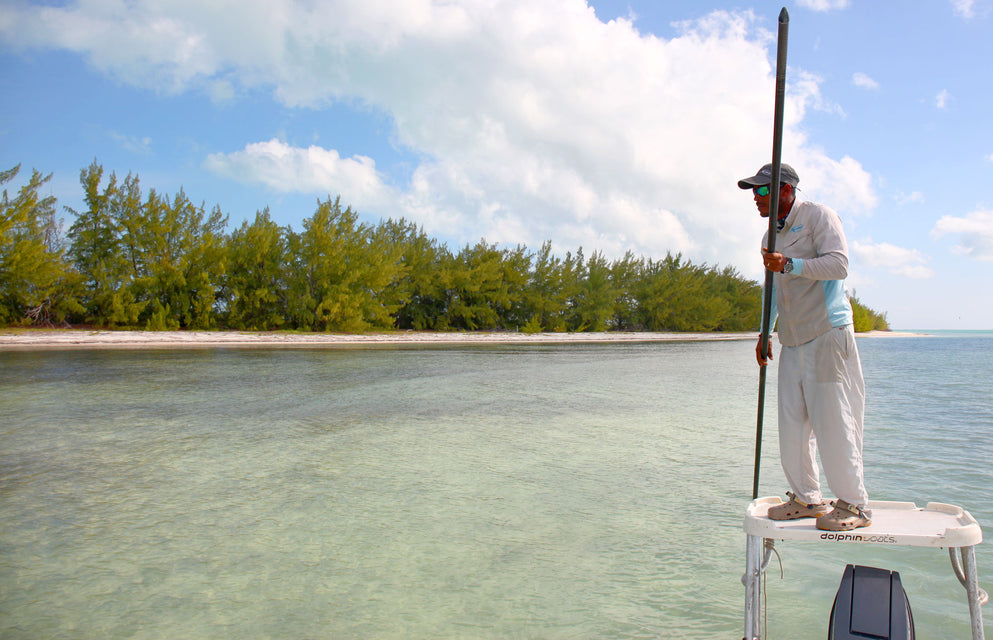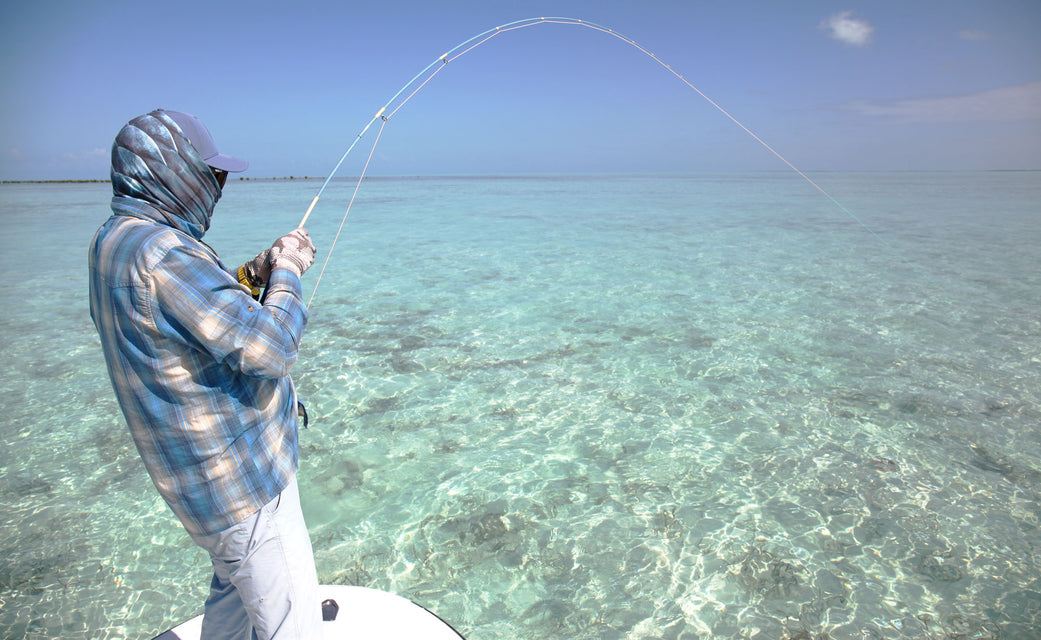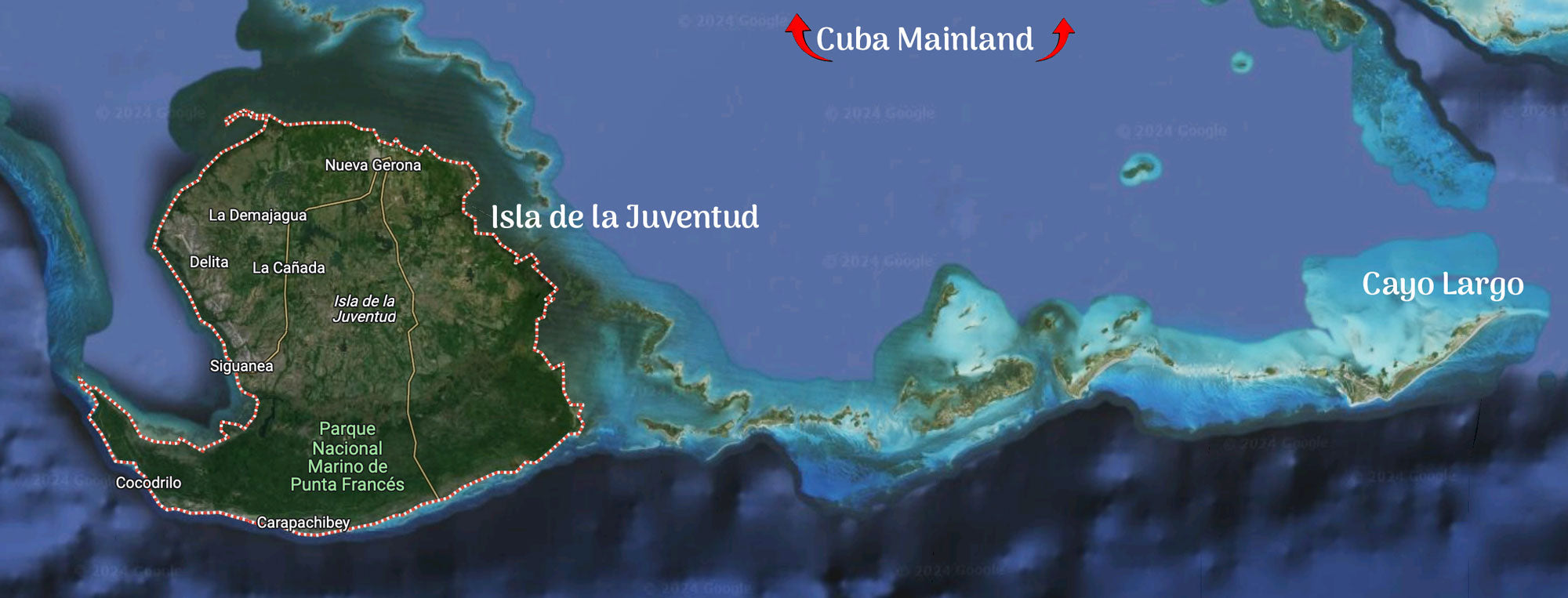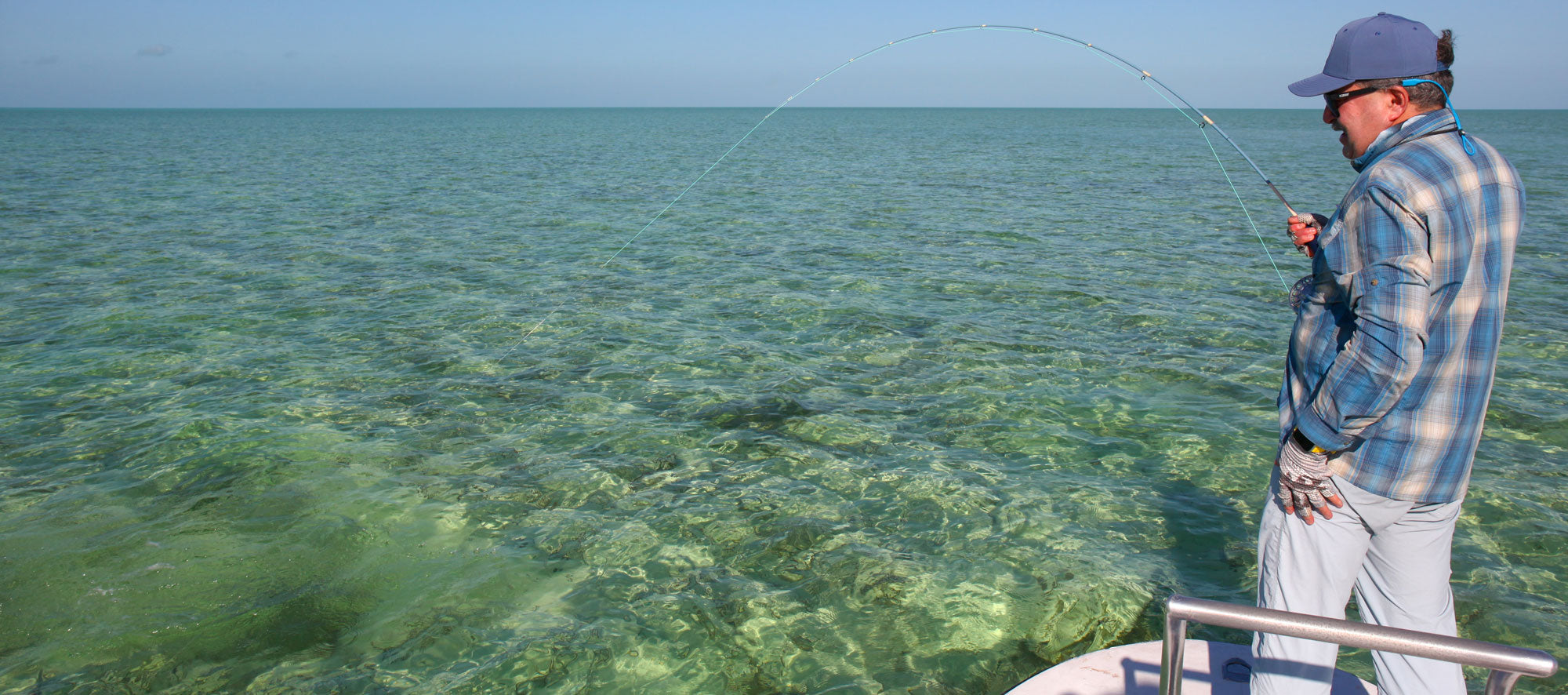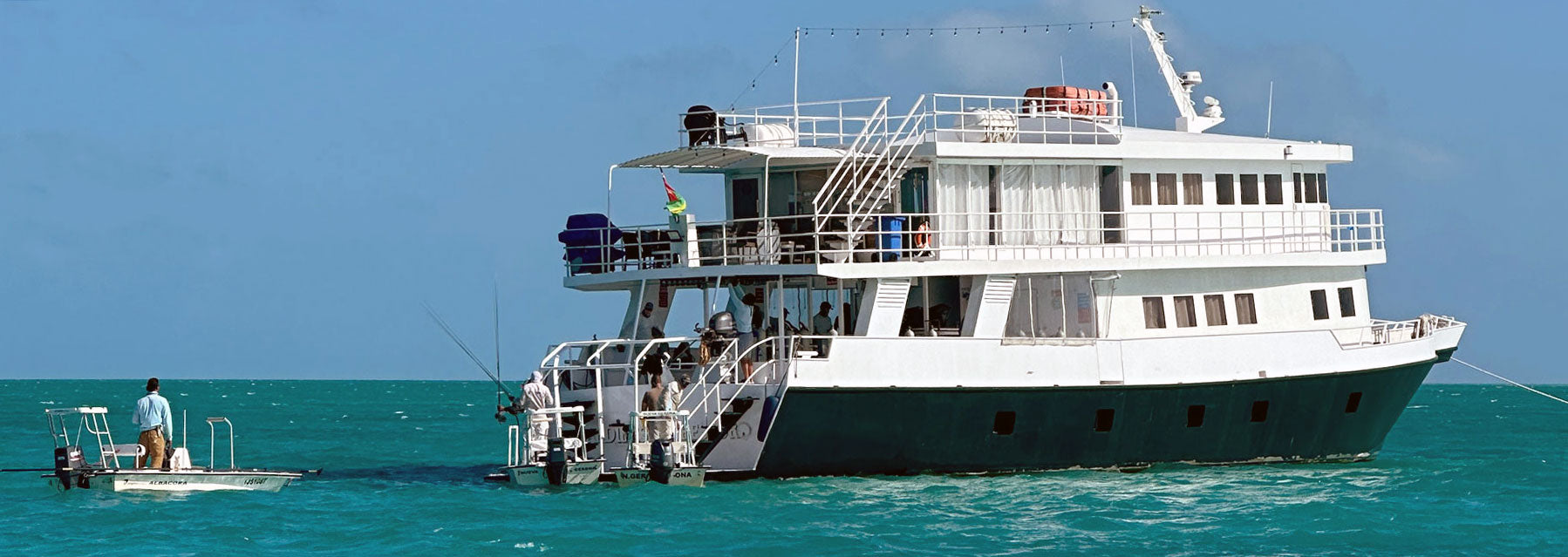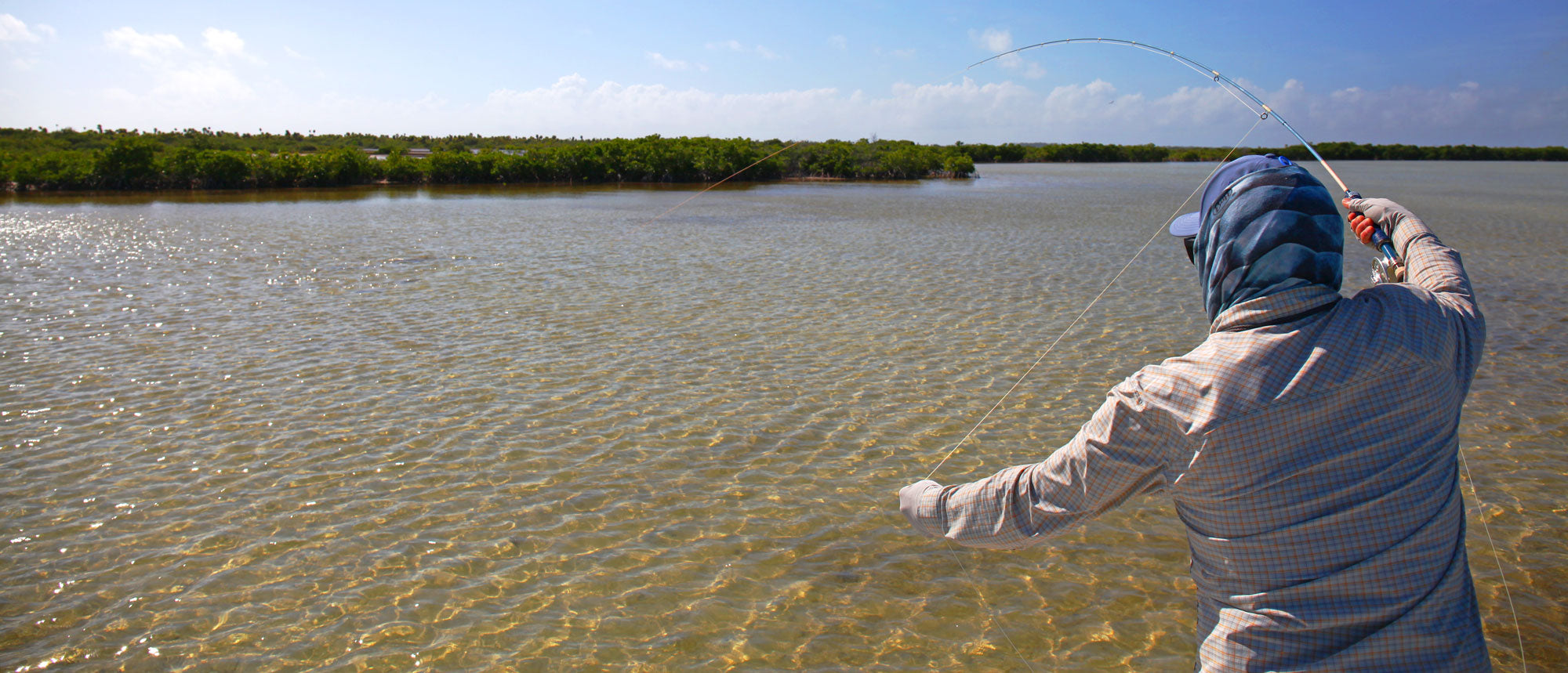Words + Photos By: Josh Thelin
Saltwater fly rods have a unique place in fly fishing. They are dealt a wide variety of environments to accommodate, have to manage larger fish on average than freshwater endeavors, get punished with corroding/damaging salt, and still need to find the balance between powerful, accurate, and responsive. For the most part, with the subject of "saltwater fly fishing" the fly fishing industry (as a whole) mostly thinks of bonefish flats and cruising tarpon. So with this, saltwater fly rods over the years have been designed more towards accuracy and presentation with fighting/lifting power as a secondary thought. It is understandable, as in many cases these characteristics can be mutually exclusive. Further, specifically within this review, Sage has been actually known as a maker of generally faster/stiffer rods than other manufacturers. Depending on what you are looking for in terms of your needs or how it matches with you as an angler, there is a lot to consider when purchasing your next saltwater fly rod.
The Sage Salt HD has been around for a number of years providing a very capable rod in many saltwater/big game situations. I currently own the 9wt myself which I use for striped bass here in Maine, permit/bonefish in the Caribbean, and Golden Dorado in Argentina. In the words of Sage, the Salt HD has "more pulling power than a standard Fast Action Rod to bring stronger fish to hand more efficiently, and increased line lifting power allowing for long range second casts." So this tells me a few things right off the bat if I had never cast it and were reading this for the first time: this rod is fast. And in truth, if there has been a complaint about the Salt HD from some anglers, it has been that it "lacks feel/seems clunky and doesn't have the touch and responsiveness as other saltwater fly rods, even within Sage's lineup."
But again, saltwater fly fishing is diverse. So this stiffness that some feel doesn't work for their fishing/casting needs, can also be a good tool for others in different situations. For instance I enjoy the Salt HD especially for striped bass fishing as it provides a rod that allows me to effectively and efficiently cast the flies and lines necessary for stripers. For most of these situations I am not looking for a rod that can delicately place a small + lightweight shrimp fly accurately at 70ft (a la bonefish or redfish), but a rod that can manage throwing lead-eyed clousers/crab patterns as well as wind-resistant hollow flies on sinking and aggressive tapered fly lines. Sure, there are certainly situations with striped bass fly fishing where you can target the fish in flats with a technique very similar to bonefish/permit, but a vast majority of striped bass anglers are not doing this on a regular basis.
Sage has now released their replacement for the Salt HD. The Salt R8 is a continuation of the R8 family of rods. Using their proprietary Revolution 8 technology, Sage has replaced the KonneticHD technology which was previously available in the Salt HD. This newest rod technology has certainly provided a lighter-weight and responsive rod in the R8 CORE offerings, so let's see how the new Salt R8 fairs against its predecessor...
Rods Used:
Lines Used:
Flies Used:
- Clouser (medium lead + large brass dumbbell eyes)
- Crab Fly (medium lead eyes)
- Hollow Fly (4/0 hook)
- Articulated Beast Fly
Reels Used:
We wanted to give the Salt R8 a wide range of tests. This included not only using a variety of different fly lines and flies, but also environments. The first place we brought the rods was into a local gymnasium. This gave us a completely sterile area with no weather/wind to effect the casting. Being able to cast the rods without any environmental interference allowed us to get a good baseline assessment.
Before we started casting, I did the ol' wiggle test with the 9wt Salt HD and Salt R8 side by side. Right out of the gate it was clear that the Salt R8 was not only lighter but also had more flex, especially in the top section. It did feel "softer" but not in a bad way. The flex styles of the two rods are distinctively different. After rigging up the different lines and flies, casting them side by side with the Salt HD, the Salt R8 felt not only more pleasant to cast, but surprising capable at managing the heavier lines and bigger flies. Additionally, it seemed that I had to work less while casting the Salt R8 to get similar (distance) results as the Salt HD. It took very little effort to get the Coastal Quickshooter 9IXP line with a hollow fly tied on to shoot across the gym. This told me that the power of the Salt R8 is there and comparable to any saltwater rod currently on the market. Plus, with the softer tip section accuracy was enhanced and it was overall a more efficient and pleasant rod to cast compared to the Salt HD.
The 10wt echoed similar results. In the gym, the 10wt Salt R8 performed better than the Salt HD is almost every way. However, once we both tied on aggressive sinking lines and big flies, the Salt R8 seemed to run out of gas a little, but not by much. This was true with the 9wt as well. Certainly doable and the rod could get the job done, but the stiffer Salt HD had an easier time managing the grunt work.
So, then it was time to bring them outside...

It was windy on this day. Gusts of around 20mph kept things interesting. But, what is a saltwater fly rod test without some wind? Using the same setups as inside the gym, we cast at various targets/distances, changed flies, changed lines, and cast at different angles into the wind. The Salt R8 continued to be the more pleasant casting rod between the two. However, it did start to suffer a little quicker than the Salt HD when the wind picked up and we were trying to negotiation larger/heavier flies and more aggressive lines. This was one of the few instances that the Salt HD had a leg up.
As we continued to cast both the 9 and 10wts, the differences between the two models became greater. The more I cast the R8 Salt I was able to manage all of the lines that we brought with comfort and, with the exception of the Beast Fly, could easily cast all of the flies accurately with less effort needed than the Salt HD. But the wind was a deciding factor between the two. With either the hollow fly or the Beast Fly, the Salt R8 started to suffer quicker than the Salt HD. However, something to consider: throwing these types of flies or aggressive lines is not what everyone does or needs to do. Which brings me to fly lines...
Best Fly Line
One of the things that I like to take note of when doing these types of fly rod shootouts is to see which lines the rod really prefers. This can not only be a good indication of the type of action the rod is but also what techniques, situations the rod will do best in, or even which species it's best suited for. Testing rods with only one line doesn't really give much information. So that is why we picked fly lines from floating to sinking, aggressive or presentation minded, and also coldwater and tropical.
A while back we tested a group of 9wt rods with specifically striped bass fly fishing in mind. (You can read our "9wt Fly Rod Royale" HERE). At the end of that shootout the RIO Coastal Quickshooter was our favorite line across the board. It was aggressive enough to load the faster action rods that we like for this type of fishing. In this shootout, although I was pleasantly surprised athte R8 Salt's ability to manage all of the lines we brought, I found that the RIO Elite Flats Pro was the best matched line for this rod. This makes sense as although the Salt R8 is a very capable rod with both power and feel, I think that it will shine brighter on the tropical flats than it will chucking big flies and heavy lines especially in windy situations.
Conclusion
Joe Webster from here at All Points had a good overall assessment of the Salt R8 after our testing:
"The R8 Salt 9 and 10wt models are overall a much smoother and pleasant experience to cast than the Salt HD. I think the R8 Salt will probably outperform in every situation other than in rough windy conditions, more specifically windy conditions when wading from shore. For our local striper anglers, I think there are better tools out there, even amongst Sage’s current offerings. But it certainly may be a better tool for our local striper anglers who may not like the broom stick feel of rods that handle heavy sink tips and large flies so well. It just may be more difficult during poor windy conditions (which isn’t for everyone either). If I had to reach for one of the two on a calm day I would choose the R8 Salt every time. But if a rough windy day came about I’d probably still be fishing the Salt HD with a more aggressive and heavier line. Overall I see this series going over very well with everything from sea trout to sailfish with the unfortunate exception of shore bound striped bass fisherman."
Both Joe and I really liked this new rod from Sage. For those who did not like the feel (or lack thereof) of the Salt HD, this rod is definitely worth checking out. Additionally, according to Sage, the Salt R8 has also improved the durability of this rod which I know in some situations was a complaint about the Salt HD. This is not only a perk for any angler, but certainly to note for remote/traveling anglers. As their newest flagship saltwater rod, I can see this going over very well for years to come.
Thanks for checking out this review! If you have any questions for us, please feel free to contact us at: support@allpointsflyfishing.com
Read more




